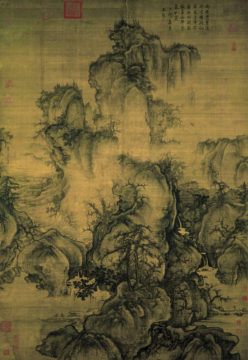by Deanna K. Kreisel (Doctor Waffle Blog)
 It had been a long time since I thought about lawns. I don’t mean in a grand philosophical sense, or the stoned contemplation of a single blade of grass. I mean thought about them at all. Before moving to Mississippi we had lived in Vancouver for 13 years, where we felt lucky to have a place to store our toothbrushes and maybe an extra pair of slacks; we really hit the jackpot when we acquired a postage-stamp-sized balcony on which we could murder tomato plants. Actual yards were out of the question for anyone who hadn’t bought a house on the west end of town 30 years ago; by the time we moved to Vancouver in 2006 as a tenure-track assistant professor and a trailing-spouse adjunct, it was already clear that we would never own a lawn.
It had been a long time since I thought about lawns. I don’t mean in a grand philosophical sense, or the stoned contemplation of a single blade of grass. I mean thought about them at all. Before moving to Mississippi we had lived in Vancouver for 13 years, where we felt lucky to have a place to store our toothbrushes and maybe an extra pair of slacks; we really hit the jackpot when we acquired a postage-stamp-sized balcony on which we could murder tomato plants. Actual yards were out of the question for anyone who hadn’t bought a house on the west end of town 30 years ago; by the time we moved to Vancouver in 2006 as a tenure-track assistant professor and a trailing-spouse adjunct, it was already clear that we would never own a lawn.
And yet here we are: the proud owners of nearly an acre of chemical-soaked herbage dotted here and there with scrubby flowering bushes native to an ecosystem half a planet away. Or at least that’s what came along with our new house in Mississippi, which was the main attraction: a 1962 bungalow with two fireplaces, built-in bookcases, arched doorways, and mellow hardwood floors. To be honest, I didn’t want the lawn—or the yard at all, really. If it had been possible to purchase a mid-century gem with a porch swing and seven ceiling fans that was floating on a gossamer cloud in mid-air—basically a house from The Jetsons—I would have done so.[1] I took one look at that expanse of greenery, factored in the whole located-in-the-Deep-South element, and saw nothing but a never-ending round of backbreaking chores. And boy, was I right. But not for the reasons you might think. Read more »

